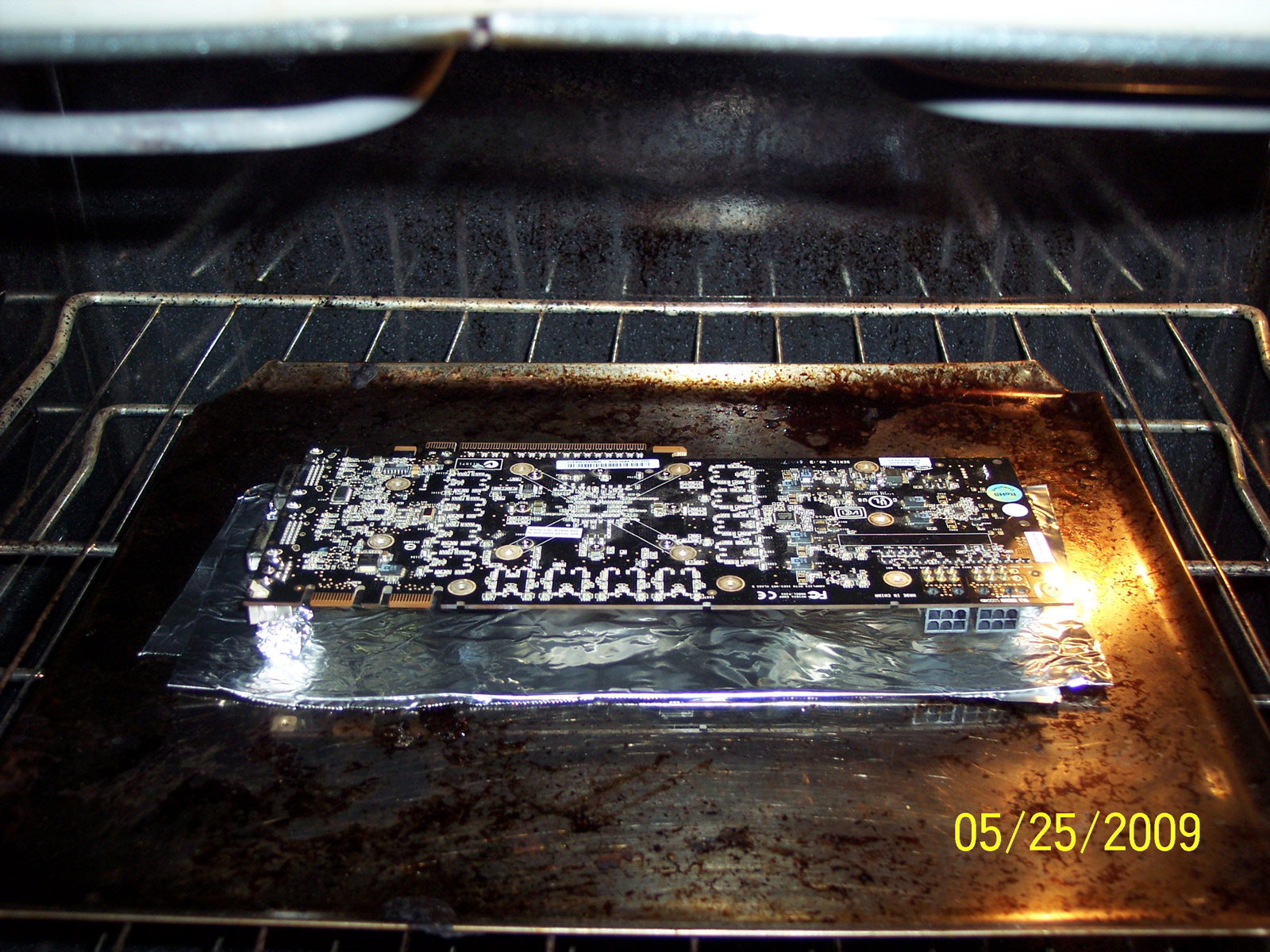Manaknight
Supreme [H]ardness
- Joined
- Jun 6, 2005
- Messages
- 5,446
gonna be doing a 360 this weekend 
nice to see it works on video cards as well
nice to see it works on video cards as well
Follow along with the video below to see how to install our site as a web app on your home screen.
Note: This feature may not be available in some browsers.
After seeing the amount of successes in this thread, I decided to give it a try, as I had two graphic cards that were non-functional (6800 GT PCI-E and 8800 GTS 640).
After heating up both cards in the oven at 385 for 10 minutes, I tested them out to see if they worked. To my surprise, both cards booted into XP and both were able to run full tests of 3DMark 06, Furmark, and ATITool!
I never expected that these cards would ever run again. The OP really deserves props for sharing this video card revival technique!
gonna be doing a 360 this weekend
nice to see it works on video cards as well
what temperature and for how long? i do use the standard technique for fixing the RRoD (letting it overheat - two ring - for 2 minutes and letting it cool), but i hadn't known this would work for the no video error as well. i could use more business.I spent 2 hours dissassembling a friend's 360 yesterday and putting the board in the oven and reassembling, lol. It worked! He didn't have the RRoD, just no video output. He was pretty astonished when we pulled it out of the oven and just connected the circuit board and it worked.
what temperature and for how long? i do use the standard technique for fixing the RRoD (letting it overheat - two ring - for 2 minutes and letting it cool), but i hadn't known this would work for the no video error as well. i could use more business.
Tried it on a 7900gt and all the caps and other components fell off.
Don't use an analogue dial oven, I think it heated too high or I left it in too long. 7 minutes or so.
No loss really, the card was dead any ways. I have another dead 7900gt, I'll try it on that eventually.. Once I figure out how to not let that happen again.
What about not turning the card upside down? Instead have it right side up and elevated. This way if the solder melts a little to much the components will not fall out.
I want to chime in and report another success story. After conducting a little more 'research,' I tried this technique on my laptop motherboard. I suspended it above a cookie sheet with little balls of foil seen in previous pictures and baked it at 425 for five minutes. After letting it cool and reassembling the Thinkpad I now have a working laptop. I'm still astonished that this actually worked.This reminds me of a similar issue. I have a half working IBM T40 with a video chip connection issue. It's very common and solder reflow fixed with a heat gun are documented online. I don't own a heat gun so I have never gotten around to it. I wonder if there is any possibility of success using an oven instead... of course a laptop motherboard has plastic bits on it like the cpu socket.
I want to chime in and report another success story. After conducting a little more 'research,' I tried this technique on my laptop motherboard. I suspended it above a cookie sheet with little balls of foil seen in previous pictures and baked it at 425 for five minutes. After letting it cool and reassembling the Thinkpad I now have a working laptop. I'm still astonished that this actually worked.
Many thanks to all the posters in this thread.
in the oven

I may have to give this a try on a messed up 7900gt I've got.
All the success stories really beg the question of how many hardware failures are due to failed/damaged solder points.